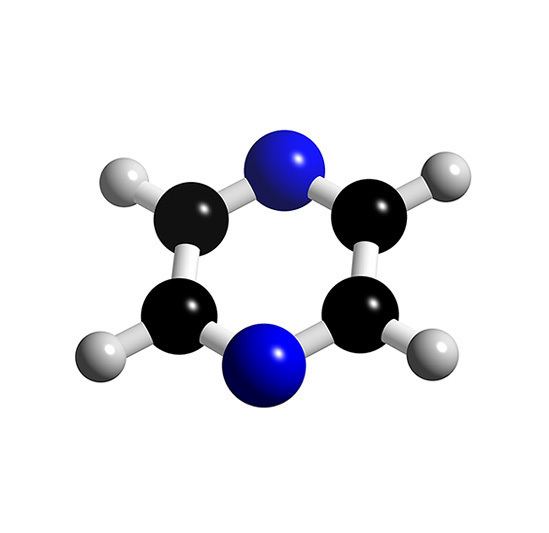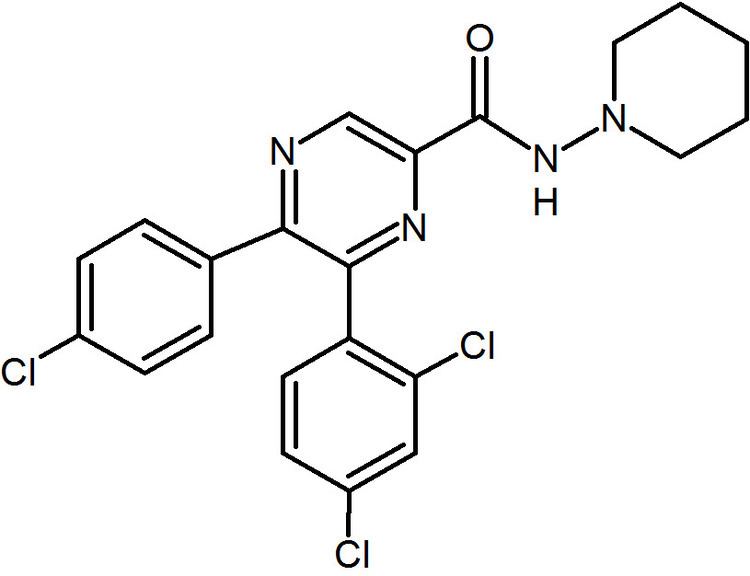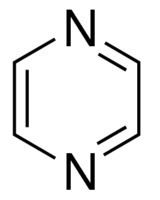Formula C4H4N2 Boiling point 115 °C Density 1.03 g/cm³ | Molar mass 80.09 g/mol Melting point 52 °C Appearance White crystals | |
Pyrazine is a heterocyclic aromatic organic compound with the chemical formula C4H4N2.
Pyrazine is a symmetrical molecule with point group D2h. Pyrazine is less basic than pyridine, pyridazine and pyrimidine.
Derivatives such as phenazine are well known for their antitumor, antibiotic and diuretic activities.
Tetramethylpyrazine (also known as ligustrazine) is reported to scavenge superoxide anion and decrease nitric oxide production in human polymorphonuclear leukocytes, and is a component of some herbs in traditional Chinese medicine.

Synthesis

Many methods exist for the organic synthesis of pyrazine and its derivatives. Some of these are among the oldest synthesis reactions still in use.

In the Staedel–Rugheimer pyrazine synthesis (1876) 2-chloroacetophenone is reacted with ammonia to the amino ketone, then condensed and then oxidized to a pyrazine. A variation is the Gutknecht pyrazine synthesis (1879) also based on this selfcondensation, but differing in the way the alpha-ketoamine is synthesised
The Gastaldi synthesis (1921) is another variation:


